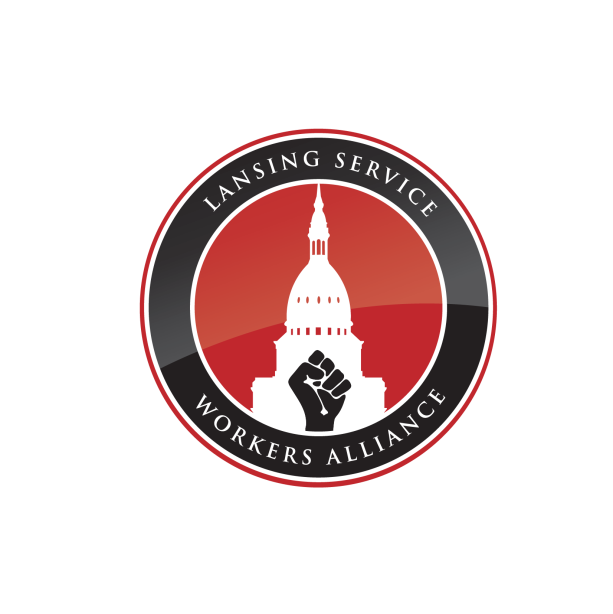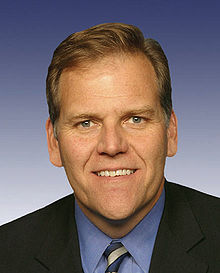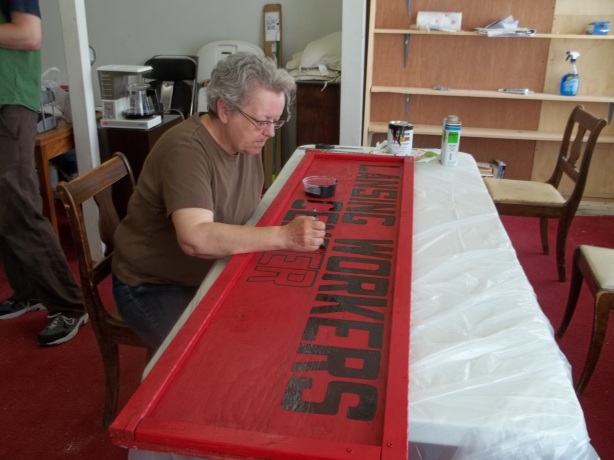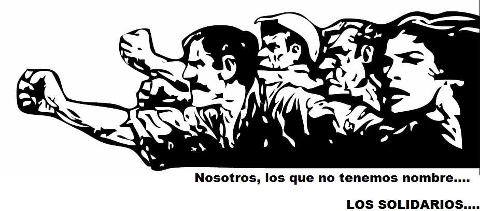 THERE IS A CONSENSUS among democratic socialists today that the struggle for deep social change has to somehow reflect the kind of society we want to build, but this remains inseparable from the questions of power, political strength and effectiveness because prefiguration goes beyond the “pure” ethical sphere to include wider issues of ideological/cultural, political and socio-economic hegemony. The revolutionary syndicalist answer to the problem of integral prefiguration represents a specific and important historical (and contemporary) synthesis. Revolutionary unionism, in the ideologically broader and more modern sense, could be defined as a movement and strategy more closely resembling traditional revolutionary syndicalism on the ethical and organizational “micro-level,” without adhering to the relatively rigid “grand narrative” which the traditional syndicalists attempted to provide. I will try to identify not only the main lines of syndicalist development, but also some weak links of syndicalist strategy, which manifest its inability to produce a sufficiently dialectical strategic solution to the puzzle of social change.
THERE IS A CONSENSUS among democratic socialists today that the struggle for deep social change has to somehow reflect the kind of society we want to build, but this remains inseparable from the questions of power, political strength and effectiveness because prefiguration goes beyond the “pure” ethical sphere to include wider issues of ideological/cultural, political and socio-economic hegemony. The revolutionary syndicalist answer to the problem of integral prefiguration represents a specific and important historical (and contemporary) synthesis. Revolutionary unionism, in the ideologically broader and more modern sense, could be defined as a movement and strategy more closely resembling traditional revolutionary syndicalism on the ethical and organizational “micro-level,” without adhering to the relatively rigid “grand narrative” which the traditional syndicalists attempted to provide. I will try to identify not only the main lines of syndicalist development, but also some weak links of syndicalist strategy, which manifest its inability to produce a sufficiently dialectical strategic solution to the puzzle of social change.
Beginnings
ALTHOUGH EARLY ATTEMPTS AT COMBINATION were already made in the pre-Chartist period (The Grand National Consolidated Trades Union of 1834 being a well-known example), it took several more decades of betrayal by craft unions and union bureaucrats for the ideas of industrial unionism and revolutionary syndicalism to flourish.1 To the narrow sectionalism of contemporary unions, industrial unionists counterposed the idea of organizing all workers in the same industry into the same union regardless of skill or trade, and organizing across industries — in such a way building collective leverage and workers’ power through unity and solidarity beyond the boundaries imposed by capitalist society. Free associations of producers were the ultimate goal of this vision. The idea of a system of labor councils, or Chambers of Labour (Bourses du Travail), which were to be the protection of workers in the existing system and the nuclei of the future society, was already present in certain sections of the First International (especially among Spanish and Belgian delegates, the Swiss Jura Federation, and many French sections,2 but its practical implementation within the International came to an abrupt end when the two rival groups exemplified by Marx and Bakunin split at the Hague Conference in 1872, and it suffered further setbacks with the defeat of the Paris Commune and the incipient spread of reaction across Southern Europe. Revolutionary Syndicalism, which first flourished in France at the end of the 19th century, developed both as a practical response to the exploitation of workers, bureaucratic and craft unionism and — especially in its more explicitly anarcho-socialist forms — as a response to the parliamentary strategy of the Second International, when the understanding that the real strength of workers ultimately lies in their character as producers began to rapidly develop. The French Confederation Generale du Travail (General Confederation of Labour, CGT, founded in 1895) became one of the main initiators of the syndicalist movement. It was captured by the syndicalists, and was largely a result of patient anarchist and syndicalist radicalizing work from within the mainstream trade union movement. As opposed to the largely negative program of many anti-capitalists of the time, revolutionary unionists propagated (somewhat idealistically, arguably out of context from the actual dynamic of the development of class consciousness and class power) “constructive” libertarian socialist activity based upon the ideas of self-help, mutual aid and struggle from below and the reorganization of socio-economic life on the basis of workers’ self-management.3
General Characteristics
LIBERTARIAN REVOLUTIONARY UNIONISTS are generally distrustful of leaders and the principle of hierarchy. Their views on the subject usually correspond to the “iron law of oligarchy” concerning the danger of bureaucratization inherent in hierarchical organizations, as identified by the German sociologist Robert Michels in his anarchosyndicalist phase. Revolutionary unionists therefore emphasize the importance of local branch and workplace assemblies, with union officials being directly elected, accountable and recallable delegates in direct contact with their fellow workers. Ultimately, independent rank-and- file thinking and initiative are seen as the basic precondition for liberation, since “the emancipation of the working class is the task of the working class itself” (Marx). Related to the detestation of bureaucracy and the managerial approach is the rejection of the goal of centralized “state socialism.”
As an alternative to the politics of states and parties, revolutionary unionism posits the economic reorganization of production, replacing the rule of man over man with the simple administration of things.(…) Revolutionary unionism considers that along with the disappearance of a property owning caste, must come the disappearance of a central ruling caste; and that no form of statism, however camouflaged, can ever be an instrument for human liberation, but that on the contrary, it will always be the creator of new monopolies and new privileges.4
Revolutionary unionism is therefore distinguished from most other approaches by its unequivocal endorsement of self-management and strong commitment to socialism from below. Its ideas of direct working class power precede and resemble the early Russian soviets and factory councils as a form of anti-capitalist dual power. Furthermore, there is distrust of parliamentary politics,5 which is often extended to suspicion of party politics and conquest of state power in general, especially among anarchosyndicalists. However, there have also been and continue to exist revolutionary unionists who — while subscribing to the goal of socialism from below and genuine participatory democracy — still recognize a certain role for socialist revolutionary parties. Antonio Gramsci’s Ordine Nuovo brilliantly epitomized (and served as a catalyst for) the fiercely democratic, councilist spirit of the Italian factory occupation movement of 1919-1920 (“biennio rosso”).6 The Marxian syndicalism of James Connolly is another prominent example of such an approach which, in a strategic and dialectical way, cautiously attempts (primarily through a revolutionary party) to utilize the political system, elections and the concrete, existing social structures and movements, but nonetheless appreciates and supports the central role of workers’ self-government in the creation of a genuinely democratic socialist society.7 Another trait of most syndicalist organizations is federalism, IWW being a notable exception with a somewhat more centralist organization, mainly because of the enormous territory it had to cover (and still does), at the same time basing itself on the democratic principles of (relative) local autonomy, recallable delegates with limited tenure, membership referendums etc., principles which were first put to practice on a grand scale in the Paris Commune of 1871. Additionally, revolutionary unionists are united in their desire for truly combative unions, either through transforming existing unions, starting new, alternative ones, or combining the creation of autonomous rank-and-file structures with work in existing mass organizations, but universally stressing the value of creative militancy and primacy of direct action.8 They share the supposition — syndicalists in the narrow sense especially — that the working class must prioritize the industrial, economic front.9 Following from this, syndicalism can largely be defined as “hardline workerism,” which quite often (although not always and automatically) degenerates from an uncompromising commitment to egalitarianism into vulgar anti-intellectualism and rejection of organic intellectuals as possible allies in the struggle, one of the important reasons for syndicalism’s lack of greater, longer-lasting counter- hegemonic ideological influence (somewhat ameliorated by a typically vibrant and creative workers’ culture of resistance). Finally, it is important to note the syndicalist “myth” of the revolutionary general strike — sometimes propagandized as an isolated, final act (especially by early French and American revolutionary unionists), and as a possible nonviolent/unarmed path to socialism. However, it was generally seen as a prototypical “insurrectionary general strike,” and it remains so both in syndicalist10 and more popular contemporary Marxist approaches.11
Syndicalism’s Greatest Moment – CNT and the Spanish Revolution
SYNDICALISM’S MOST ILLUSTRIOUS CHILD has to be the historical Spanish CNT (Confederation National del Trabajo, National Confederation of Labor), and it was among the more “prodigal” ones as well. The development of the Spanish libertarian labor movement, especially from 1910 when CNT was founded, and in the early stages of the revolution itself, is one of the most encouraging stories of democratic empowerment in the 20th century. Many thousands of libertarian revolutionaries, workers and peasants sacrificed their lives for a world based on genuine equality, decision-making by common people and freedom from oppression in the multiplicity of its forms. For a short time that new world seemed very near.
It is the great merit of Libertarian Socialism in Spain, which now finds expression in the CNT and the FAI, that since the days of the First International it has trained the workers in that spirit which treasures freedom above all else and regards the intellectual independence of its adherents as the basis of its existence.12
The Spanish CNT had over 550 000 members in May 1936.13 It was ostensibly the strongest revolutionary organization at the onset of the civil war, main organizer of anti-fascist resistance, initiator of expropriations, agrarian collectivizations and factory councils.14 Although external factors (mainly the civil war and the sheer superior force of the reaction backed by Mussolini’s and Hitler’s military might) shouldn’t be underestimated, the defeat of the revolutionary forces was also partly a result of their mistakes and weaknesses. The CNT in particular had to sacrifice its program in order to maintain an alliance with the Popular Front government, with a few of its leading members (who were also militants of the explicitly anarchist FAI) even becoming government ministers.
Radical land reform in the Republic endorsed and proclaimed by the government, would have allowed the Republicans to appeal to the peasant soldiers of the fascist army over the heads of their officers. If the Madrid government had proclaimed the Spanish colonies, Morocco for instance, liberated, they could have appealed to the Moorish soldiers of Franco’s army to rise against the generals, or desert to the Republic. They did none of that. Their self-imposed “bourgeois” limitations ruled out everything of that sort. Above all, in the Republican areas they stood against a socialist revolution.15
A minority current within the union (and the independent Marxist POUM) advocated a political takeover, but that would have led to the breaking of antifascist unity and an open confrontation on at least three fronts: against the fascists, the republican and authoritarian left government as well as capitalist owners themselves. The CNT proved unprepared (or unwilling) to develop and carry out an independent program for workers’ power; it was unwilling to wage a battle for dominance against other currents fighting for control under the guise of the popular front, and was forced into submission and compromise politics, ultimately being pushed aside by the Stalinist, “left-bourgeois” and fascist reaction.
Major Criticisms
ONE OF THE BIGGEST CONTROVERSIES regarding syndicalism has been its tendency to form alternative unions determined to compete with mainstream, craft and reformist ones, and organize the unorganized workers that the existing unions usually weren’t interested in. It is necessary to take into account the important, although often not entirely clear-cut distinction (stressed by Hal Draper, for instance) between dual/alternative unions that came out of actual struggles and the actual mass labor movement (like the CIO), and ideological dual unionism: “artificial” attempts at “inventing” mass alternative organizations “out of the blue,” and often with a radical phraseology that is alien and intimidating to most workers, therefore being an impediment to organizing. Following from Lenin in “‘Left Wing’ Communism — an Infantile Disorder”16, Trotsky argued strongly against dual unionist strategies and stressed the absolute necessity of working within existing mass unions vs. the tendency to form ideologically pure unions and turn backs on the workers stuck in bureaucratic trade unions.17 Some syndicalist unions grew out of the existing workers’ movement by boring from within (e.g. French CGT, partly CNT & early American IWW). The Australian IWW largely pursued the “boring from within” agenda, with considerable success and a very strong position in the early Australian workers movement. It was based on the concept of a “conscious minority” and dual membership in the mainstream trade unions as well as the IWW, constituting the fighting spirit of those organizations. In the U.S., William Z. Foster (later a Communist Party leader), influenced by French syndicalists, produced a brilliant, powerful critique of dual unionism that all proponents of this approach would do well to consider.18 However, see Max Eastman’s and Karl Radek’s more nuanced position regarding the IWW in Max Eastman, Foster, The Liberator, 1921, as well as Hal Draper’s greater “tolerance” of the IWW in light of the fact it was breaking new ground in terms of organizing the unorganized etc. (Hal Draper, Marxism and the Trade Unions, 1970, not to mention James P. Cannon’s unwillingness to directly cross swords with his past (James P. Cannon, The I.W.W., Fourth International, summer, 1955). Moreover, “boring from within” also holds grave dangers for the revolutionary movement, and has so far largely failed to produce expected results (or perhaps live up to its true potential).19 Other important charges have been that of economism and anti-politicism. It has often been argued that syndicalist neglect of the political sphere obstructed the creation of democratic revolutionary parties, in the end leaving vanguardist options as the only serious party-political response to social-democratic betrayal. These charges were less of a problem for Marxist revolutionary unionists like Connolly, Debs or De Leon who had their socialist parties and could therefore also easily mobilize around issues that weren’t strictly economic. Yet there were and are obvious, significant antinationalist, antiracist, and antisexist implications of syndicalist battles, if little explication. IWW was for instance far more open than most to women workers and workers’ wives. “The IWW has been accused of putting the women in the front. The truth is, the IWW does not keep them in the back, and they go to the front.”20 It was also among the first to make an attempt at breaking the racial boundaries between the American working class, and the first to include all “races” (Knights of Labor excluded the Chinese). “During its active life, from 1905 to about 1924, the IWW issued about a million membership cards, of which about 100,000 were to Negroes.”21 Furthermore, syndicalist involvement was important in general strikes for universal suffrage, they were heavily involved in free-speech, anti- war, anti-conscription and community struggles etc. Indeed, while syndicalists have often been accused of vulgar economism (by Lenin and Gramsci for example), others have actually attacked the tendencies towards (universalistic) “revolutionary romanticism” instead of simply concentrating on bread-and-butter issues. A considerable number of IWW and CNT radicals (for instance) even attempted to further countercultural ideas such as free love. A major, indeed central criticism, as previously stated in relation to the CNT, is that syndicalists — especially anarchosyndicalists — have on the whole failed to effectively address the issue of state power and construct an offensive program with regard to the state, a program for taking power. This evasion of the problem of power has gotten worse since the days of the practical syndicalist unions, and the current position of workerist ideas is particularly unfavorable on the anarchist Left. The centrality of the labor movement in Left, and especially anarcho-socialist politics has been seriously challenged, and the workers’ movement as a whole is in many ways lagging behind “new social movements.” Libertarian revolutionary unionism has largely lost its natural ideological base, at least for the time being.
Decline
THE RISE AND FALL OF SYNDICALISM as a mass movement that dominated the revolutionary left landscape at the beginning of the 20th century22 has been compared to a shooting star by some, and a plainly failed concept by others. The beginning, as with some other revolutionary movements, was very promising. Between 1902 and 1908, the French CGT experienced a rapid growth from 100,000 to 400,000 members — “out of a total unionized population of 900,000 workers. Its fight for the eight-hour day, […] for a day off work each week, for wage increases and improvements in working conditions — a fight often crowned with success — made it the representative of the finest of the labor movement’s aspirations to emancipation.”23 That same CGT later fell under reformist, governmental and jingoistic influences, and is today the biggest — and one of the most mainstream — trade union confederations in France. Although some have argued that the “golden age of syndicalism” is confined to the period prior to WWI, it was actually largely still a formative phase, with early 1920’s marking syndicalism’s zenith (at least in terms of membership), even though the Spanish CNT’s heyday came later. Nonetheless, the Russian Revolution meant the “beginning of the end” for syndicalism, which was increasingly being seen as “old hat,” without any such “successes” like the Bolsheviks had to point to, and unable to grasp the new political arena that was unfolding. Third International anti-syndicalist policies and the rise of communist parties didn’t help either. Stalin’s “Third Period” (with the establishment of “red unions”) eroded the position of the syndicalists even further. In 1922, the International Workers’ Association (IWA) was founded in Berlin as a syndicalist counterweight to the Second and Third Internationals. Present at the conference were, among others, Argentinian Workers Regional Organization (FORA) apparently representing 200,000 members, the Industrial Workers of the World in Chile representing 20,000, the Free Workers Union of Germany (FAU) with 120,000, the Italian Syndicalist Union (USI) with 500,000, General Confederation of Workers in Portugal with 150,000, the Swedish Workers Central Organization (SAC) with 32,000, National Workers Secretariat of the Netherlands representing 22,000, the Committee for the Defense of Revolutionary Syndicalism in France [a breakaway from the CGT] with 100,000, and the Federation du Battiment from Paris representing 32,000. “The Spanish CNT was unable to send delegates due to the fierce class struggle being waged in their country under the dictatorship of Primo de Rivera. They did, however, join the following year.”24 Secondly, another major factor that has to be considered with regard to syndicalism’s demise was the extreme repression that often frustrated organizing efforts and destroyed gains that were already made. Workers and union organizers (often one and the same in the case of syndicalism) were subjected to methods such as red baiting, mass deportations, long imprisonment, or vigilante “justice” among other things.25
The Argentine FORA, in the middle of an internal wrangle in 1931, was suppressed by the military, never to regain its importance within the trade union movement. The Chilean IWW was beaten into the ground by the Ibanez dictatorship. The German movement was liquidated by the Nazis and a left-right combination of Stalinists and falangists destroyed the Spanish CNT in 1938-39.(…) Salazar wiped out the Portuguese movement. Brazilian syndicalists felt the lash of the Vargas regime. (…) the Castro regime finished off the Cuban syndicalists – something neither the Machado nor the Batista regimes were able to do.(…) Communist, fascist and military dictatorships crushed the movement in Argentina, Brazil, Russia, Germany, Italy, Bulgaria, Spain and Portugal. Government repression also played a part in the weakening of the Chilean and American IWW and the Mexican CGT. 26
Cooption proved more fruitful in other cases, such as the one of the Polish Solidarnosc (its full name, reflecting its early semi-syndicalist spirit, is still “Independent Self-governing Trade Union “Solidarity”). Furthermore, other factors such as the changing economic structures with new, hard to organize, non-unionized industries impermeable by political unions; agricultural collectivist principles — plausible in Spain or Ukraine, not in places where individual ownership was traditional; militant anti-clericalism which actually aided in the separation of the working class along the lines of religion, instead of truly helping to annul its negative effects; cooption and competition from conservative, mainstream and business unions, now infinitely superior when it comes to organizational size in the vast majority of countries — have all added to the demise. Ultimately, the centralization of political and economic power was the overwhelming tendency of the 20th century. Syndicalist ideas ran contrary to the tide of history.
Today & Tomorrow
GEOFFREY OSTERGAARD, THE SCHOLAR OF WORKERS’ CONTROL, stated in 1954 that the
syndicalism of the period 1900-1920 now appears as the great heroic movement of the proletariat, the last desperate attempt before society took the plunge down the managerial abyss to emancipate the proletariat by its own exertions, to build up a distinct proletarian culture purged of any traces of bourgeois ideology, and to evolve a uniquely proletarian method of social action.27
The resurgence of traditional syndicalism and separate “free unions” does indeed seem an unlikely prospect, at least in developed countries. Syndicalist unions still seem quite plausible in Third World countries where low levels of union density, coupled with hyperexploitation, lower level of political representation and a greater level of direct class conflict offer opportunities for combative, class unions. The energetic Mexican FAT (Frente Authentico del Trabajo, about 50,000 members and a working relationship with the American class union UE) and the great proto-syndicalist Indonesian union FSPNI (allegedly with a membership close to a million) are better-known examples. The militancy of the South Korean labor movement is particularly notable. Also, considerable inroads have been made by some less ideological, “reformist” class unions (some of which are gathered in FESAL – European Federation of Alternative Syndicalism), such as the SUD unions in France that are influenced by democratic socialism and base committee ideas, the Swedish syndicalist SAC (about 10, 000 members) which controls a portion of shipyards and the postal service, the Spanish CGT (with membership claims ranging from 60,000 to 100,000.28 Particularly interesting is the Italian base union movement expressed through the COBAS (“Comitati di Base,” committees of the base) unions originating from the radicalization of the 60s (reaching its political peak in the “hot autumn” of 1969, although the number of Italian factory councils continually increased from 1969 to 1973) and with a couple hundred thousand members, mainly in education but also among metal workers for instance.29 Their presence, it could be argued, contributes to the atypical militancy of the Italian labor movement. Some non-sectarian revolutionary unionist organisations could also provide one of the bases for highly progressive work in mass organizations, if they transformed themselves more into militant rank- and-file networks which would actively intervene in these conservative organisations. When ultra- leftists state that trade unions “may now be considered as a special police force deployed against the workers,”30 that is a recognition, but also an exaggeration of structural tendencies that are certainly present and even dominant at this stage of trade unionism in the “developed” world. However, trade unions aren’t static entities — they are themselves spaces in which a continual class struggle for power between the union bureaucracy and the workers takes place. It is a struggle which mustn’t be neglected, but the enslavement by the trade union machinery has to be actively resisted.31 Socialists should work with, but also against trade union officials when necessary; they should help build strong and direct- democratic shop-floor, sectional organizations; combine struggles, encourage cross-sectional solidarity; and point to the political connection between fighting for immediate goals and building a better world. Syndicalism itself is an ideology that is here to stay, although some of its past strategies — especially those that fetishist organizational purity over engaging with the working masses in less than pure organizations and movements — haven’t withstood the test of time. Principled, daring opposition to the bureaucratic stifling of labor organizations is a necessity, but it should keep clear from well- intentioned, yet ultra-leftist fantasies that can ultimately only frustrate the efforts of libertarian revolutionaries. The only way ideas of workers’ power and solidarity are to have relevance for the present and for the future is through engagement with average (and below-average) workers and an organic connection to the actual, existing labor movement through immersion into mass popular struggles and organizations, with a clear strategy centered at empowering the rank-and- file of labor.
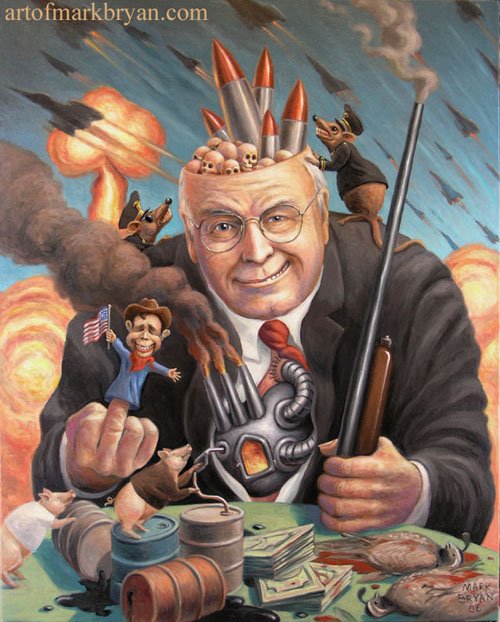 “We wouldn’t have any American economy without the automobile business. That’s literally true. This is a great industry that has to go on and keep turning out more cars and trucks, and there have to be places for them to run – they’ll need more roads, and in order to get that done people are going to be inconvenienced who are in the way.”
“We wouldn’t have any American economy without the automobile business. That’s literally true. This is a great industry that has to go on and keep turning out more cars and trucks, and there have to be places for them to run – they’ll need more roads, and in order to get that done people are going to be inconvenienced who are in the way.”
